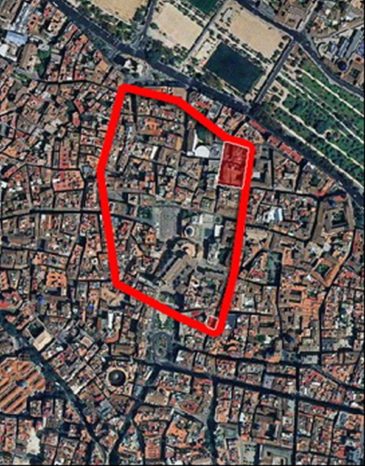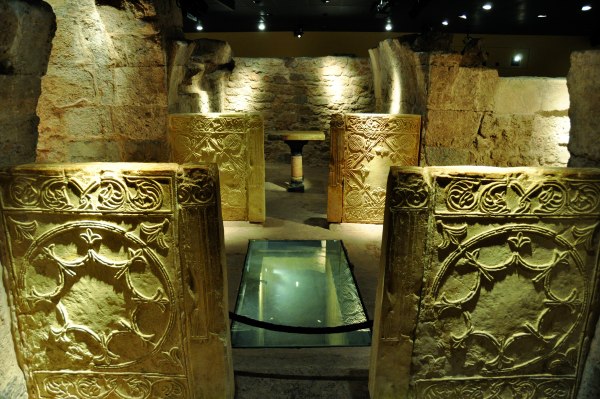Enclosure Roman Wall
The wall was built in the second century BC. of C. when the city was founded. The first historical reference of Valencia describes it as an oppidum , that is, as a fortified place. It is mentioned in a text (Historiae 2.54) by the historian Salustio of the first century BC. of C. in narrating the battle that took place in 75 BC. of C. at the foot of the walls, cited as moenia.
This walled enclosure was complemented by a system of moats that, together with the river channels that surrounded the city, reinforced its defensive capacity. This moat, or moat, which surrounded the whole enclosure, has only been well recognized in Cabillers Street. There, its width was 3.50 meters, by 1.40 deep.
Its layout would run eastwards, behind the towers of Serranos, more or less parallel to the Turia and behind the Islamic tower. It would turn south at the height of the present Viciana Street and through the Tosalet Street was supposed to reach Avellanes, from where it would head west along Cabillers Street, would cross Queen's Square, continue through the Corregeria street and Juristes street, crossing Cavallers street under the new tower of the Palau de la Generalitat, going along Serrans street to the homonymous towers.
It would have four gates, as was usual in Roman cities located on the plain. There is epigraphic evidence of the existence of one of them, the Porta Sucronensis , (Corpus Inscriptionum Latinorum II2/14,33). Two others, the northern (Porta Saguntina) and the southern ( Porta Sucronensis) can be seen under the building on Calle Avellanes 11.
Some sections of the pit that delimited the enclosure have also been identified: building between Calle Caballers and Plaza de la Reina, western side of Calle Serranos, Calle Conde Trenor. Currently, very few remains of this wall are preserved, embedded in the plot and inside buildings in use. In very few points of the city there are remains of the Roman wall, which present little and uneven level of conservation.
The section of Avellanes street is eight meters long and is built with large irregularly arranged ashlars, while that of Salvador street, probably a tower, is made of regular masonry that covers a filling of pressed earth or soft baked clay.
The Palau de la Generalitat was only visible in 1940 during the construction of the western tower. It was described as a large wall 1.90 meters wide, located between 3.50 and 4.50 meters deep, built with "lime mortar and very strong edge", which indicated that it was probably a species of opus incertum or caementicium. There is no data on the width of the walls or towers because they have always been found next to cuts or party walls.
These few findings have yielded no detailed chronological information, except for Viciana Street, which belongs to the Republican era. The one on Carrer Avellanes can be from both the Imperial and Republican periods, while the one in the Palau de la Generalitat is considered to be from the oldest phase due to its depth, between three and four metres, at which it appeared.



Dades bàsiques
Plaza Dècim Junius Brutus (Roman consul), s/n
46001 Valencia